How to Remove Tarnish from Silver Bars and Silver Coins
24/04/2024Daniel Fisher
Free & fully insured UK Delivery. Learn more
Secure & flexible payments. Learn more

Buyback Guarantee Learn more
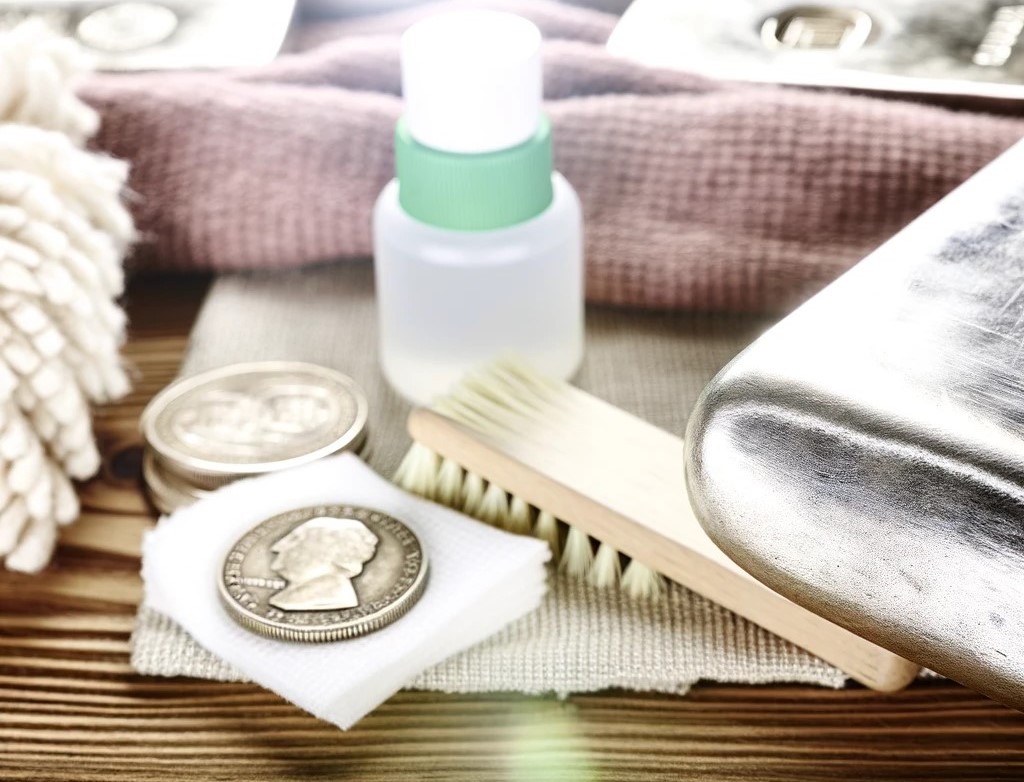
Tarnishing can spoil the look of silver bars and silver coins, as well as have an impact on their value.
But proceed with caution before you start frantically cleaning your old silver items. While successfully removing tarnishing and milk spots may increase the value or silver coins, overzealous washing or scrubbing can in fact damage your silver.
Here are some tips to follow if you want to remove unsightly blemishes from the surface without doing damage to the precious metal beneath.
While brand new silver coins and bars may look pristine, it’s very common for their appearance to change over time. Silver is far more likely to show aesthetic reactions to the elements than gold, so we’re frequently asked about cloudiness, darkness and spots.
Tarnish is a dull, dark layer that forms on the surface of silver when it reacts with sulphur compounds in the air or other substances like moisture. This reaction creates silver sulphide, which gives silver its tarnished appearance. It’s a common occurrence in various metals including brass, silver, aluminium, and copper.
While rusting of metals causes damage to the integrity of the object, tarnishing is purely superficial. It impacts only the top layers of the metal, actually forming a protection from destructive rust to the material underneath.
In general, different purities of silver tarnish at varying rates. Higher purity silver, such as .999 fine silver, tarnishes more slowly compared to lower purity silver alloys like sterling silver (.925).
High purity investment silver coins and bars therefore are not likely to show corrosion to the same extent as lower grade silver objects. However, a degree of discolouring can be expected over time if the coins and bars are handled often.
Factors such as exposure to air, moisture, and pollutants can influence the speed at which silver tarnishes. Contact with very high sulphur containing substances can cause very rapid tarnishing which can cause worry. Avoid contact with certain foods such as eggs, onions, and olives. But handling your silver can also cause contamination, as sulphur exists in human skin oils and perspiration, and even rubber gloves, wool, and elastic.
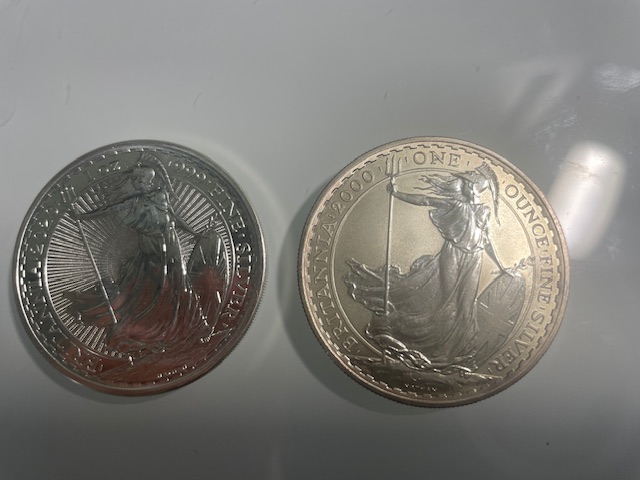
The Silver Britannia on the right is comparatively dull with tarnishing.
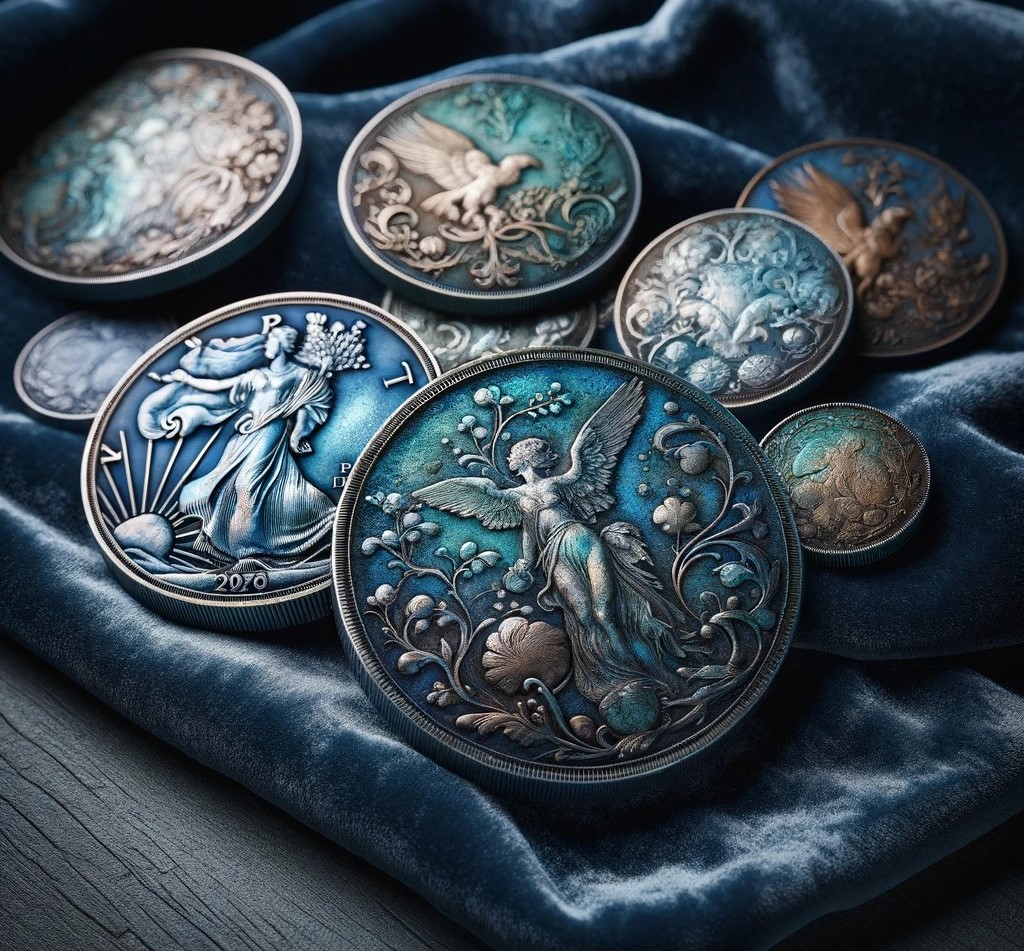
Patina is a thin layer that develops on the surface of silver over time due to natural aging processes. It’s often characterized by a subtle discoloration, dark areas, or a soft sheen. Patina commonly forms in grooves, perhaps around indentation detail on coins.
This aging process can enhance the beauty and value of antique silver items, actually being perceived as a desirable aesthetic. The silver can take on a warmer feel with patina, causing collectors to appreciate the character and authentic feel it adds. It’s not uncommon for ‘vintage look’ silver jewellery to have a patina feel added in the manufacturing process to create the antique feel.
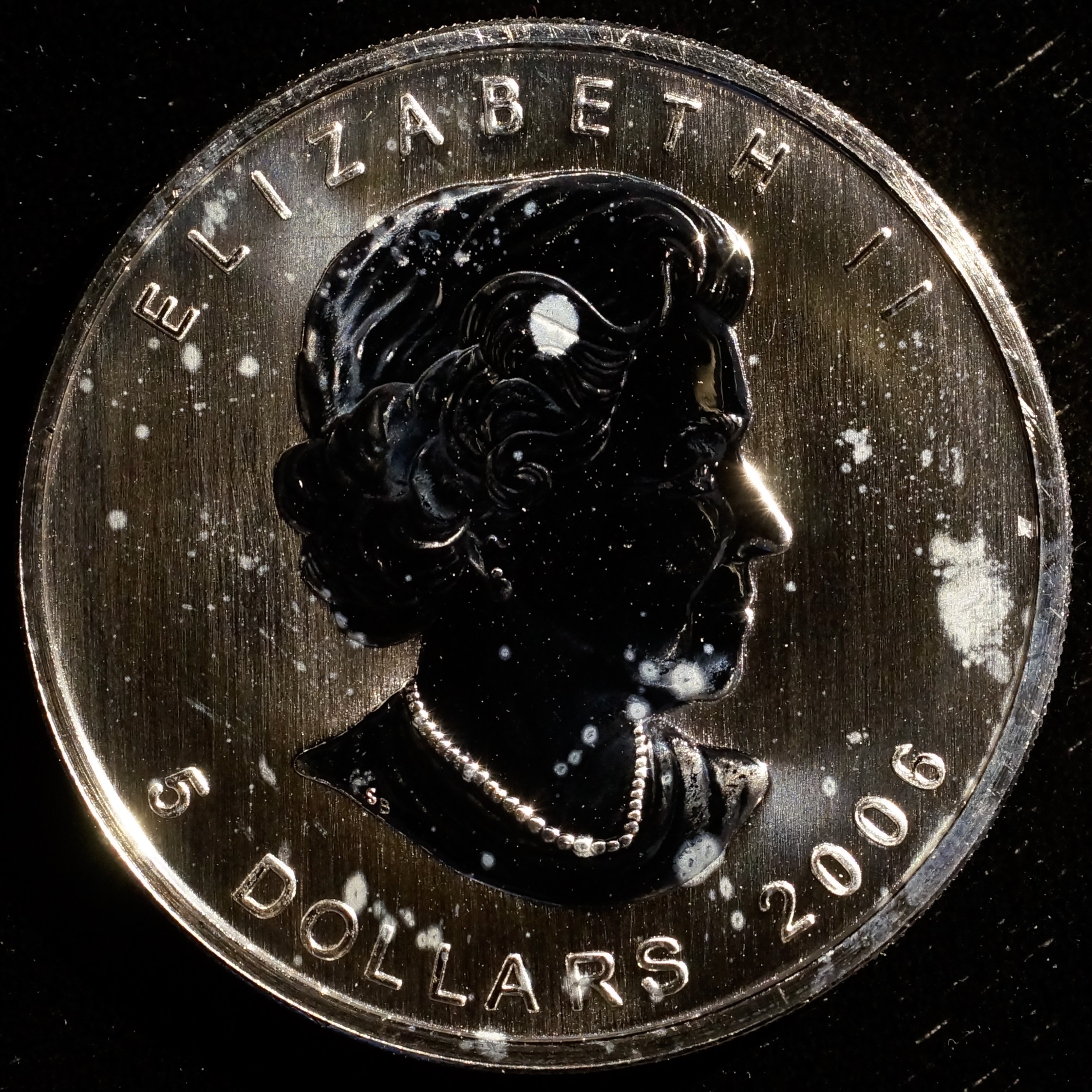
Milk spots are small white spots that can appear on the surface of silver coins. They’re typically caused by impurities in the silver or during the minting process. While tarnishing and patina generally occur over time, milk spots can be present even in brand new silver coins or bars. If chemicals used to clean minting equipment aren’t removed fully, they can transfer onto the silver blanks during minting. The Royal Canadian Mint has developed a protective technology to reduce milk spots in their silver coins called MINTSHIELD.
While milk spots don’t affect the silver’s intrinsic value or purity, they can impact the coin’s aesthetic appeal and potentially its value to collectors who prefer coins in pristine condition. While generally diminutive, milk spots can also occur in clusters, causing more impact on the visual appeal of the item. While this may not matter with silver bars, the value of silver collectable coins can be squeezed as collectors are less willing to pay substantial premiums for affected coins.
Essential Rules to Maximize Your Selling Price
Depending on how significant the discolouration and tarnishing, there are a few stages to possible cleaning and removal. Starting with simple washing for dirty silver, to polishing the items, and finally dipping the silver to remove deeper tarnishing. Being too heavy handed with your approach can result in the silver looking worse after your cleaning attempt.
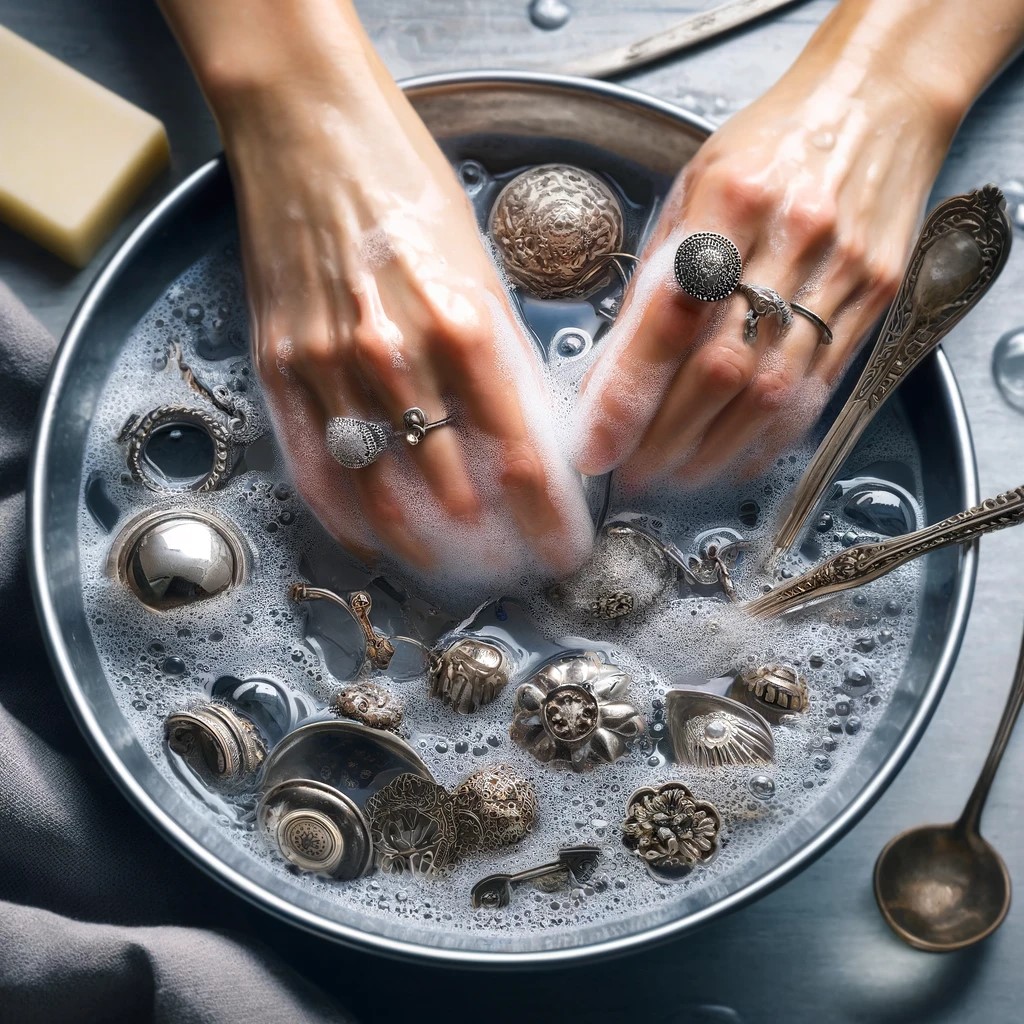
It’s always advised to treat any cleaning of silver with care and tenderness due to its susceptibility to compounds. Cleaning silver with soap and water is a gentle yet effective method to remove light tarnish and surface dirt.
Regular cleaning can maintain its shine and beauty while also helping prevent tarnish build up, preserving the lustre of your silver items for years to come. Here’s how to do it:
Start by gathering your silver items and selecting a soft cloth or sponge. Choose a mild dish soap and fill a basin or sink with warm water.
Place the silver items in the basin of warm, soapy water. Gently scrub each piece with the soft cloth or sponge, focusing on areas with tarnish or dirt build up. Avoid using abrasive materials that could scratch the silver.
Once cleaned, rinse the silver items thoroughly with clean water to remove any soap residue. Ensure all soap suds are washed away to prevent streaks or spots on the silver.
Pat the silver items dry with a soft towel to remove excess water. Avoid air drying, as this can leave water spots on the surface of the silver.
After drying, inspect the silver items for any remaining tarnish or residue. If necessary, repeat the cleaning process or proceed to further tarnish removal methods for stubborn stains.
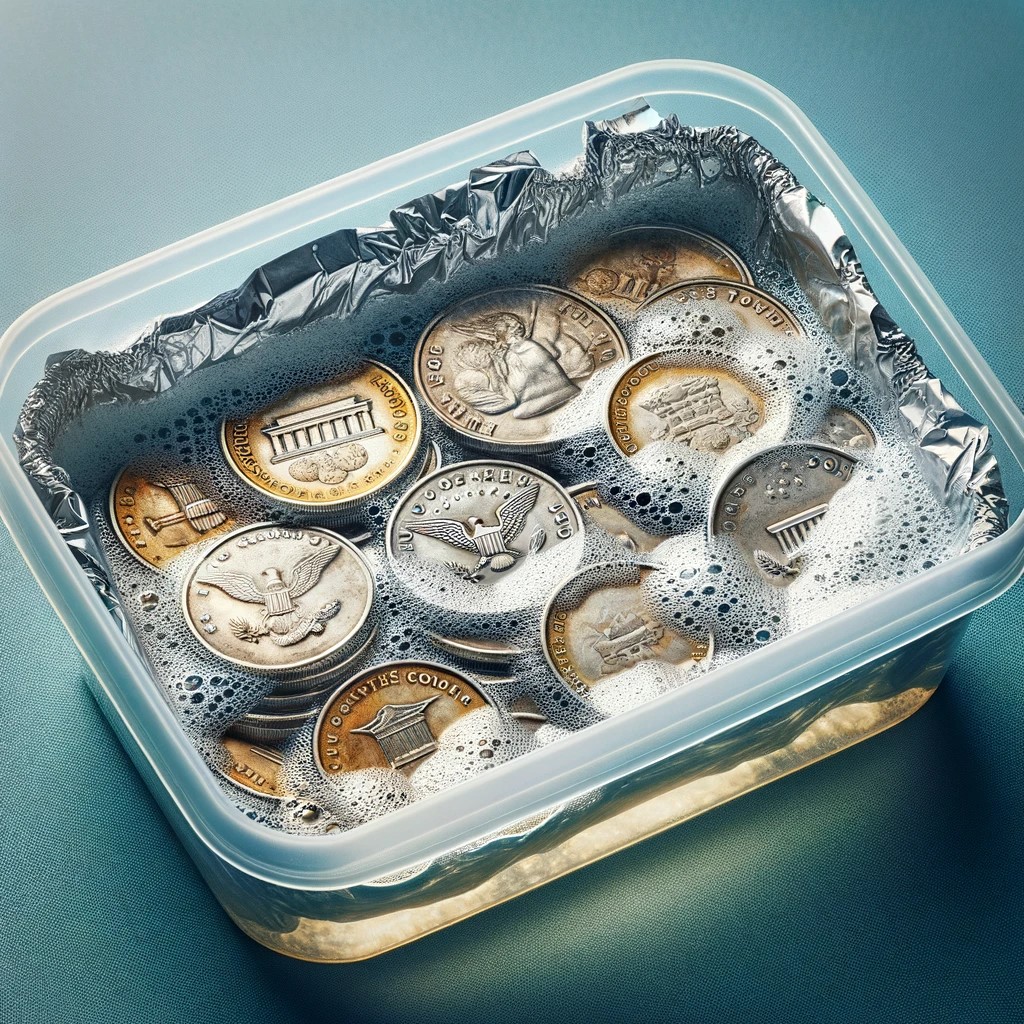
A deeper cleaning method is to dip your silver in a fluid to cause a chemical reaction, removing stubborn tarnish and marks.
It’s more involved than simply washing your silver with soap and water, so should be reserved for items that didn’t respond sufficiently to cleaning.
There are various specialist dipping agents such as Hagerty but we prefer using good old fashioned baking soda.
Begin by gathering your tarnished silver items and choose a space away from pets or children. Ensure you’re working in a well-ventilated area and wearing protective gloves to avoid skin contact with the solution.
There are seven ingredients you’ll need to get together if you want to make your silver bars and coins sparkle again when they become tarnished. We’ll go through them first, then explain how to use them together to get the desired result:
First prepare your non-reactive container by rolling out the foil and using it to line the bottom of the bowl, leaving no exposed areas. Make multiple passes with the foil if necessary.
Add hot water from a boiled kettle which has been allowed to cool slightly. Alternatively, place a measuring jug in the microwave, heating for around three minutes on full power to get the right temperature. The amount of water you need will depend on the size of the silver bar or the number of coins you need to clean, but 500-600ml should suffice in most cases. Add in a teaspoon of salt, along with two or three tablespoons of baking soda, giving the liquid a stir afterwards.
Submerge the tarnished silver items in the dipping solution, making sure they’re fully immersed. Be cautious not to overcrowd the container, as each item should have enough space for the solution to work effectively. Protective gloves should be worn and care taken with the hot water.
You should instantly notice a chemical reaction. Ensure you don’t inhale any noxious fumes. It should take about half a minute for the solution to get to work, lifting away the tarnishes and leaving the surface of the silver clean and shiny again.
After the designated time, remove the silver items from the dipping solution and rinse them thoroughly with clean water. Ensure all traces of the solution are washed away to prevent any residue from affecting the silver’s appearance.
Pat the rinsed silver items dry with a soft towel or allow them to air dry completely. Avoid using abrasive materials or rubbing the silver aggressively, as this may cause scratches or damage.
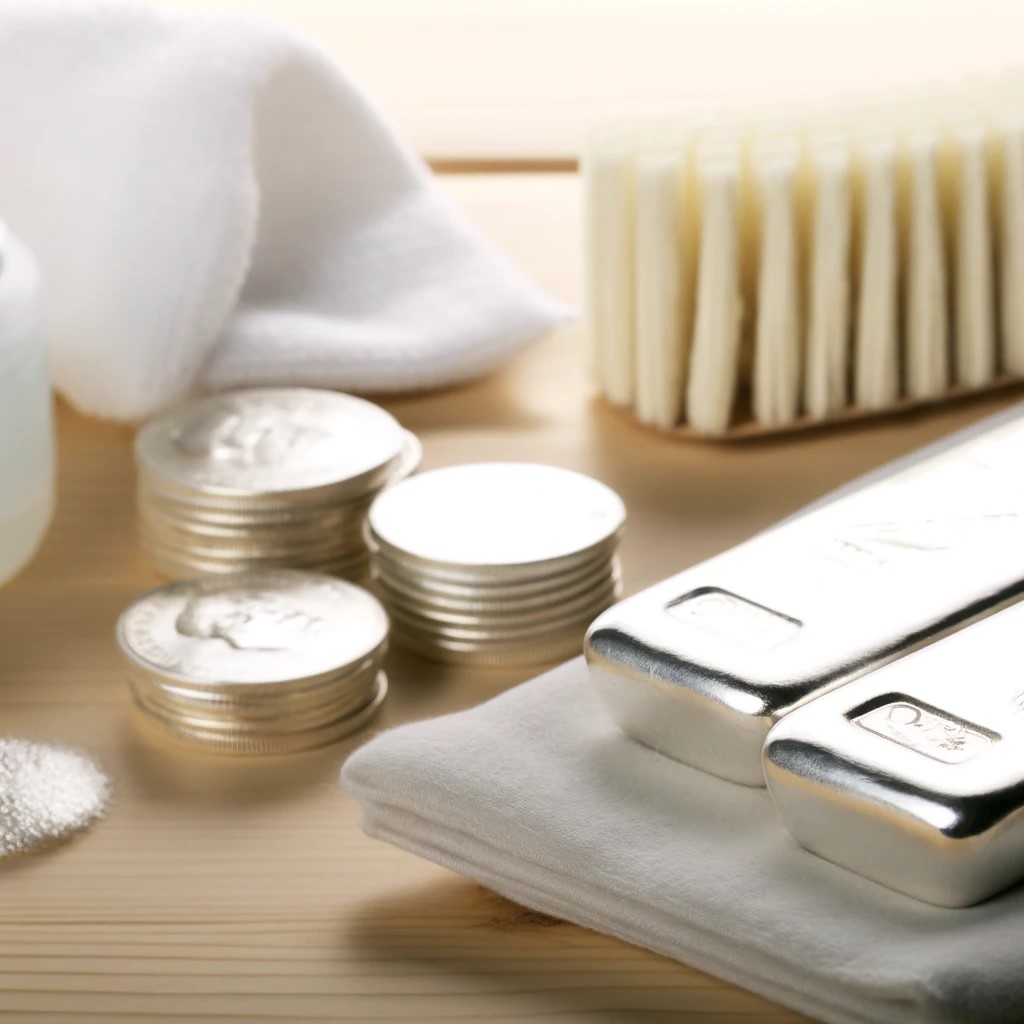
Polishing silver is a crucial step in restoring its shine and removing tarnish. It can be performed after either washing or dipping your silver to provide a finishing gleam.
Remember to handle your silver items with care during the polishing process to avoid scratching or damaging them. Regular polishing helps maintain the beauty and lustre of your silver items, ensuring they remain radiant for years to come.
Here’s a straightforward guide on how to polish your silver items effectively:
Before polishing, ensure your silver items are clean and dry. Gather a soft, lint-free microfiber cloth and a quality silver polish specifically designed for tarnish removal. Popular brands are Goddards and Connoisseurs. Don’t resort to using general cleaning fluids or sprays, or applying with Brillo pad, as these could damage your silver.
Apply a small amount of silver polish to the cloth, using just enough to cover the tarnished areas. Avoid applying polish to any decorative details or engravings, as it may be difficult to remove from intricate designs.
With gentle pressure, polish the silver items using the cloth in straight stroking motions. Don’t apply too much pressure when polishing. Focus on one small area at a time, working systematically to ensure even coverage. Continue polishing until the tarnish is removed and the silver regains its shine.
Use a separate clean cloth to remove the polish and buff the silver to a brilliant shine. Continue buffing until the entire surface gleams and any remaining polish residue is removed.
Our automated portfolio builder will provide suggestions based on various investment objectives.
When it comes to cleaning silver, certain practices should be avoided to prevent damage and preserve the integrity of your precious items. There are some fairly drastic approaches to cleaning silver recommended online, but it’s best to stick to the gentlest, safest option, rather than anything that might end up abrading the surface of the metal and compromising it further.
While it may seem convenient, using dishwashers or abrasive tools to clean silver can cause scratches, dents, or other damage. The harsh detergents and high temperatures in dishwashers can strip away protective coatings and leave silver vulnerable to tarnishing. Similarly, abrasive tools like steel wool or harsh scrubbing pads can scratch the surface of silver, diminishing its lustre and value.
It’s essential to avoid harsh chemicals that can tarnish or corrode silver. Chemicals such as bleach, ammonia, and chlorine can react with the metal, causing discoloration, pitting, or even structural damage. Opt for gentle cleaning solutions specifically formulated for silver, and always read and follow the manufacturer’s instructions carefully to ensure safe use.
When dipping silver items that contain other materials such as clasps, mountings, or gems, exercise caution to avoid damage. The dipping solution may harm delicate components or weaken soldered joints. To prevent damage, consider alternative cleaning methods for mixed-material silver items, such as gentle hand washing or targeted spot cleaning.
Caring for silver items can reduce the chance of tarnishing and prolong its gleaming shine.
Store your silver items in a cool, dry place away from direct sunlight and humidity. If you invest into silver coins or bars, consider paying for them to be stored professionally in a precious metals vault.
Incorporate regular cleaning of silver ornaments and jewellery into your routine to prevent tarnish from accumulating. A quick wipe with a soft, lint-free cloth after each use can help remove oils and dirt that contribute to tarnish formation. We wouldn’t advise this for silver coins or bars as they’re not used and handled like other silver items.
Keep your silver items away from harsh chemicals that can tarnish or corrode the metal. This includes household cleaners, perfumes, lotions, and hair products. Remove silver jewellery before swimming or using hot tubs, as chlorine can accelerate tarnishing.
Handle your silver items with care to avoid scratches, dents, or other damage. Use soft cloths or gloves when cleaning or polishing to prevent fingerprints and preserve the metal’s lustre.
For valuable or heirloom silver items, consider seeking professional cleaning and maintenance services periodically. Professional jewellers or silver specialists have the expertise and tools to safely restore and preserve your precious pieces.
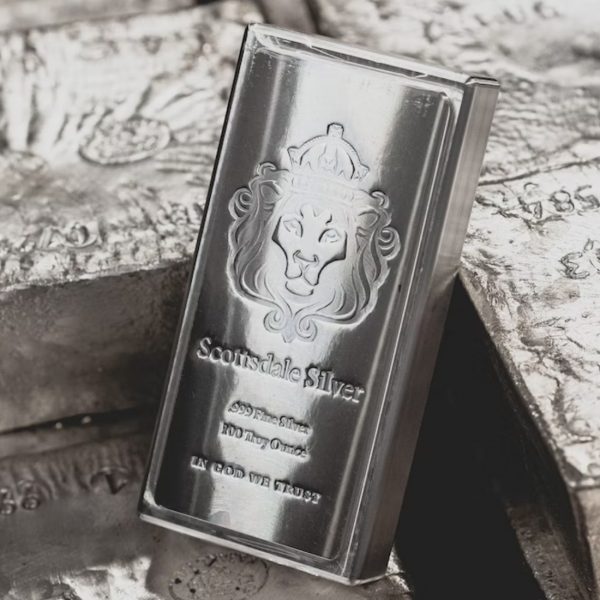
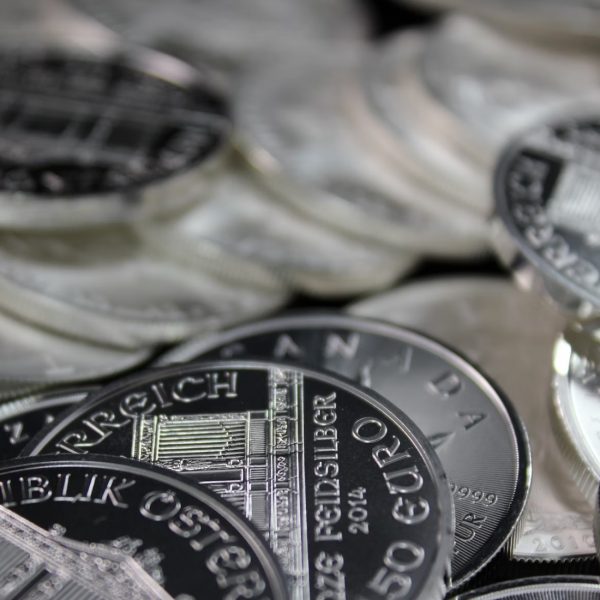
Silver tarnishes due to a chemical reaction with sulphur compounds in the air or other substances like moisture. This reaction forms silver sulphide, which gives silver its tarnished appearance.
It’s best to avoid using harsh household cleaners, as they can damage the silver. Stick to gentle cleaning solutions specifically formulated for silver.
It’s not recommended cleaning silver coins or bars if they’re not accumulating dirt. Unlike silver jewellery, cutlery, and ornaments, investment silver isn’t utilised so shouldn’t need frequent cleaning.
While dipping is effective for removing tarnish, it’s important to exercise caution with mixed-material silver items. Components like clasps, mountings, or gems could be damaged by the dipping solution. It’s best to consult a professional or opt for alternative cleaning methods for such items.
Baking soda is generally safe for cleaning silver coins, but caution is advised. While it can effectively remove tarnish, excessive scrubbing may cause scratches or damage. Consider gentle methods and consult a professional for valuable or rare coins. Remember, not all tarnish needs removal; preserving the coin’s patina may be preferable.
To clean old silver coins without devaluing them, avoid harsh methods. Instead, gently wipe with a soft cloth or use a mild soap and water solution. Professional cleaning may be advisable for valuable coins. Avoid abrasive cleaners or techniques that can damage the coin’s patina or historical integrity.
While Coke can remove tarnish from silver coins, it’s not recommended due to potential damage. The acidity in Coke may corrode or discolour the coins over time. Opt for safer cleaning methods like gentle soap and water or silver polish. For valuable coins, consult a professional for proper cleaning techniques.
Image Credit: Pixabay
Live Gold Spot Price in Sterling. Gold is one of the densest of all metals. It is a good conductor of heat and electricity. It is also soft and the most malleable and ductile of the elements; an ounce (31.1 grams; gold is weighed in troy ounces) can be beaten out to 187 square feet (about 17 square metres) in extremely thin sheets called gold leaf.
Live Silver Spot Price in Sterling. Silver (Ag), chemical element, a white lustrous metal valued for its decorative beauty and electrical conductivity. Silver is located in Group 11 (Ib) and Period 5 of the periodic table, between copper (Period 4) and gold (Period 6), and its physical and chemical properties are intermediate between those two metals.